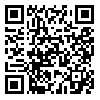BibTeX | RIS | EndNote | Medlars | ProCite | Reference Manager | RefWorks
Send citation to:
URL: http://jdisabilstud.org/article-1-3005-en.html
2- Professor, Department of Movement Behavior and Sports Psychology, Imam Hossein University, Tehran, Iran
3- Associate Professor, Department of Motor Behavior and Sports Psychology, Research Institute of Physical Education and Sports Sciences, Tehran, Iran
4- Assistant Professor, Department of Motor Behavior and Sport Psychology, Science and Research Branch, Islamic Azad University, Tehran, Iran
Abstract
Background & Objectives: Significant communication impairments and restricted and repetitive behavioral patterns characterize individuals with autism spectrum disorder (ASD). Beyond these core deficits, motor difficulty has also been regarded as a significant feature of ASD. Physical interventions are influential in improving social skills and ASD symptoms. A less prescriptive approach, such as analogy learning, has been suggested by motor–learning scientists. Analogies help learn a new concept by relating it to a similar one. The present study aimed to investigate the effect of skill learning through analogy learning and explicit learning on the javelin–throwing performance of individuals with autism spectrum disorder and compared the two methods' effectiveness.
Methods: This study was semi–experimental with a pre–test and post–test design and two experimental and one control group. The related ethical approval was obtained from the Research Ethics Committee of the relevant University and the Iran Autism Center. Written consent was obtained from the participant’s parents. In total, 36 individuals (15 to 30 years old) with ASD from the Iranian Autism Association were selected by the convenience sampling method from Iran Autism Centre. Individuals with ASD, after meeting the entering criteria of the study, were assigned to one of the three groups of analogy learning (n=12), explicit learning (n=12), and control group (n=12). Inclusion criteria were aged 15–30 years; ASD diagnosis based on the Diagnostic and Statistical Manual of Mental Disorders, 5th edition; IQ over 50 based on the participant’s record; ability to follow instructions with the assistance of the researcher; no formal javelin training experience, the ASD diagnosis for each participant by an experienced physician. Exclusion criteria were comorbidity, cognitive disorder, learning disorder, severe sensory problem, vision problems and movement limitation. The study conducted in an indoor gymnasium. The experimental group participants attended four training sessions corresponding to their group, and the control group only participated in the measurement phases. Each session consisted of 3 blocks of 15 trials separated by 2 min of rest. Data analysis was done using ANOVA with repeated measures, one–way ANOVA and Tukey and Bonferroni post hoc tests in SPSS version 21. The significance level of the tests was 0.05.
Results: The results showed that the effect of time during the training sessions from the pre–test stage to the transfer stage was significant (p<0.001); Also, the effect of the group was significant, which showed the difference in the performance of the groups regardless of the measurement stage (p<0.001). The interactive effect of the group and measurement stages was also significant, which indicated the different trends of changes in the groups in different stages (p<0.001). The comparison of the groups in the transfer phase revealed that the analogy learning group performed better compared to the explicit learning group and the control group (p<0.001), and the explicit learning group performed better compared to the control group (p<0.001).
Conclusion: Considering the characteristics of people with autism spectrum disorder, to learn new motor skills, analogy learning can bring more benefits for these people.
| Rights and permissions | |
 |
This work is licensed under a Creative Commons Attribution-NonCommercial 4.0 International License. |



